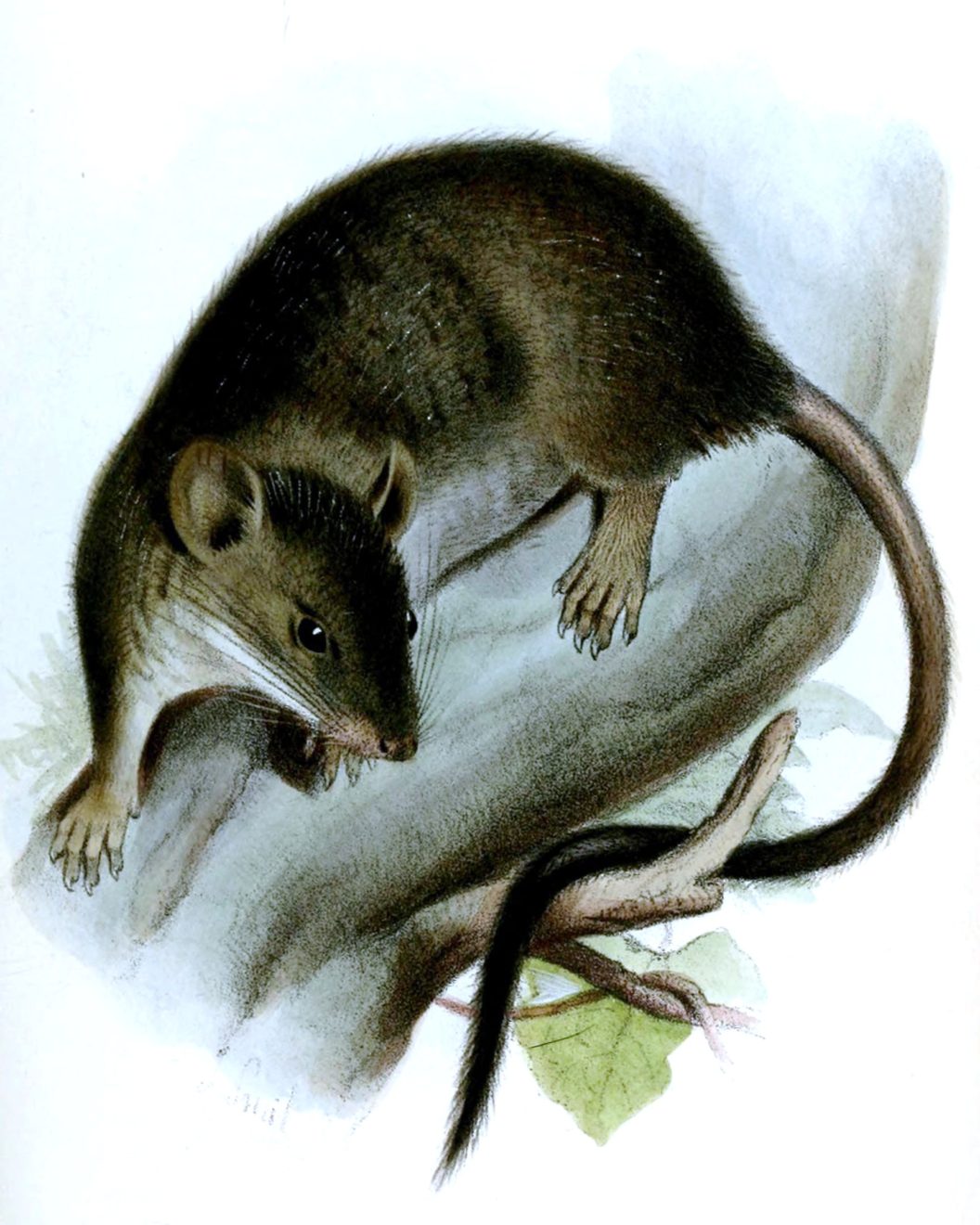For many, when they see a mouse, their first reaction is usually to scream and run. Then they go to the extent of killing it, especially if the mouse is in their house. But have you ever thought about the mouse in a different light, something more than just a rodent that runs along the beams of your house or in your storeroom? There is a mouse found in Guyana called the white-footed climbing mouse; as you continue to read this article you will learn about some abilities and features of this mouse.
Features Of The White-footed Climbing Mouse
- Head & Body – With a head-and-body length of 180 mm (7 in), the white-footed climbing mouse is the largest species in the genus.
- Fur – The dorsal fur is typically medium brown, with the hairs being banded in yellowish and reddish hues, and long dark guard hairs being scattered throughout the coat.
- Flanks – The flanks are rather paler and the underparts yellowish, cream or white, the hairs having grey bases.
- Tail – The tail is about the same length as the head-and-body and is densely clad in short reddish to dark brown fur and terminates with a long tuft of hair.
- Feet – The hind feet are large; the dorsal surface has a large dark patch which extends onto the first or second phalanges of digits II to V, and sometimes also onto digit I. The sides of the feet and around the toes are a silvery colour.
Did You Know? A mouse, plural mice, is a small rodent characteristically having a pointed snout, small rounded ears, a body-length scaly tail, and a high breeding rate. The best-known mouse species is the common house mouse (Mus musculus), this is different from the white-footed climbing mouse (Rhipidomys Leptodactylus) mentioned in this article. Mus musculus is also a popular pet. In some places, certain kinds of field mice are locally common. They are known to invade homes for food and shelter.
Scientific Classification Of The White-footed Climbing Mouse
White-footed Climbing Mouse – Rhipidomys Leptodactylus [Scientific name]
- Kingdom: Animalia
- Phylum: Chordata
- Class: Mammalia
- Order: Rodentia
- Family: Cricetidae
- Subfamily: Sigmodontinae
- Genus: Rhipidomys
- Species: R. Leptodactylus
Habitat Of The White-footed Climbing Mouse
The white-footed climbing mouse is a species of South American rodents found in Bolivia, Brazil, Ecuador, French Guiana, Guyana, Peru, Suriname, and Venezuela. It is the type species of the genus and the type location was the lower eastern slopes of the Andes in central Peru. The white-footed climbing mouse is native to the rainforests of the Amazon Orinoco basin; it is present in the lowlands of the west and central Brazil as well as the Andean piedmont area in eastern Bolivia and Venezuela. In Peru, its upper altitudinal limit is 1,750 m (5,700 ft). It is typically found in the canopy of trees growing in terra firme humid forest.
Ecology Of The White-footed Climbing Mouse
The white-footed climbing mouse normally lives in humid evergreen forests. It is a frugivore and has been found among crops, where it is considered a pest, and inside dwellings; it has been reported as gnawing a pineapple, eating sugarcane and yucca. Pregnant females with two or three embryos have been observed in Peru in August and September, and in Ecuador in September and November. One individual was nesting in a hole 15 m (50 ft) off the ground in a tree.
Status Of The White-footed Climbing Mouse
This is a generally uncommon species that has a very wide distribution. The population trend is unknown but the total population is assumed to be large and the International Union for Conservation of Nature has rated the animal’s conservation status as being of “least concern”.
15 Fascinating Mouse Facts To Think About
- They store nuts and seeds in secluded places near their nests, typically under logs, in bird nests or in abandoned burrows of small mammals.
- Mickey Mouse, created by Walt Disney, was the first mouse character, used in children cartoons and animation. It first appeared in 1928 and since then have remained very popular along with Speedy Gonzales, Jerry from ‘Tom and Jerry’, Stuart Little and other famous mouse characters.
- Mice are able to display their mood through facial expressions.
- Mice are believed to empathize and feel compassion, sharing feelings of one another, which directly affects the way they themselves feel.
- These rodents are accomplished explorers. These extremely curious animals investigate the environment by squeezing objects through tight gaps and biting them with their solid teeth.
- Mice are known to be very clean, neat and highly organized animals. The burrow of each individual has separate places, used as shelter, toilet and food storage.
- There are more than 30 known species of mice.
- Mice are usually nocturnal animals. They have poor eyesight but make up for this with their very good hearing and smell.
- Mice have a number of predators including cats, wild dogs, foxes, birds of prey, and snakes.
- In the wild, mice are herbivores that eat all kinds of fruit and grains from plants.
- Mice tails can grow as long as their bodies. Mice use their whiskers to sense changes in temperature and to help feel the surface they are walking along.
- A mouse eats 15 – 20 times a day. Therefore, they usually build their homes close to food sources, tending to only travel up to 8 m from their burrows to find food.
- Mice and rats are the most commonly used animals in laboratories for scientific experiments.
- The mouse is a delicacy in eastern Zambia and northern Malawi, where they are eaten as a source of protein.
- Because they have so many predators mice usually only live for about six months in the wild. In a lab or as a pet they can live for up to two years.
White-footed Climbing Mouse In Guyana
Yes, as creepy as it may sound to you, the mouse is a fascinating animal. They have their own unique abilities and features, for example, they are clean, neat and highly organized animals. Except for those times when they steal your food and leave bits and crumbs all over. Obviously, this is why they tend to live up to six months, also they are prey to a lot of animals in the wild. Nevertheless, many people have mice as pets and they adore them, some can even perform a few tricks. Guyana has the white-footed climbing mouse which is the largest species in the genus.
Article References:
- https://en.wikipedia.org/wiki/Mouse
- http://www.sciencekids.co.nz/sciencefacts/animals/mouse.html
- http://animalia.bio/white-footed-mouse
- https://en.wikipedia.org/wiki/White-footed_climbing_mouse
Discover more from Things Guyana
Subscribe to get the latest posts sent to your email.







